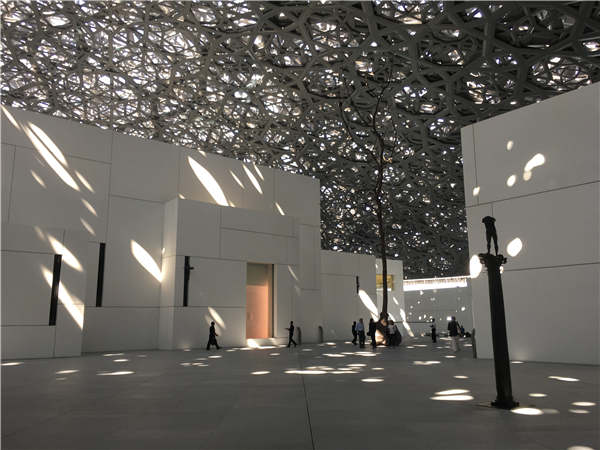 |
|
The newly opened Louvre Abu Dhab with a huge dome is a architectural wonder and a world-class museum. [Photo by Wang Kaihao/China Daily]
|
About 620 items are part of the Louvre Abu Dhabi's permanent collection, while 300 more works are made available on loan. The works of art will not just come from the Louvre Museum in Paris, but 12 other top-tier institutions housing artworks from all over France, including the Musee d'Orsay, Guimet Museum, and the Palace of Versailles over the next three decades.
But will museum visitors to France appreciate this bold move? Many critics there have accused the museum of selling out to the highest bidder.
On the floor of the museum's main entrance hall, there is a huge multilingual map listing the names of the world's major cultural hubs during ancient times. It only takes seconds to spot many Chinese cities like Beijing, Chang'an (today's Xi'an), and Luoyang.
The opening exhibition, which lasts for around one year, displays about 600 artifacts, divided into 12 chapters in chronological order from the earliest empires to modern times: Ancient archaeological finds, the decorative arts, neoclassical sculptures, paintings by modern masters, and contemporary art installations are all represented.
As a fan of archaeology, I pay more attention to exhibits that reveal the history of ancient civilizations like Egypt, Bactria (mainly in today's Central Asia), and Mesopotamia.
For example, the displays include a monumental two-headed statue from Jordan, which is believed to be the world's earliest figurative representations, dating back 6,500 years.


























 Raymond Zhou:
Raymond Zhou: Pauline D Loh:
Pauline D Loh: Hot Pot
Hot Pot Eco China
Eco China China Dream
China Dream China Face
China Face






